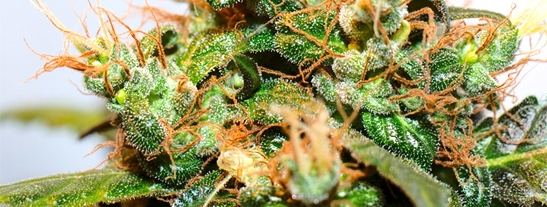Terpenes are currently center stage in the world of cannabis, in fact, Google Trends shows that across North America interest in terpenes has tripled over the five years spanning 2017 to 2022. That means there’s a lot of you out there wondering, what is a terpene? With well over a hundred terpenes identified in the cannabis plant, each with its own impact on the taste, aroma and the therapeutic benefits of marijuana, it’s no wonder that our interest in terpenes is in full bloom. In this article Florin Wellness Center will give you an entry point on this expansive topic.

Role of Terpenes in Plants
One of the defining characteristics of plants and arguably why they produce so many interesting chemical compounds is their inability to move, because of this inability to get up and move like us animals, plants have had to evolve complex chemical pathways through which they interact with the world around them. Think of plants as nature’s chemists. These plant compounds serve many functions; some are used to attract pollinators and other animals that have evolved a symbiotic relationship with that particular plant species while others serve as a deterrent.
One of the most fascinating examples of plant and animal symbiosis is that of the ant and the acacia. Acacia trees have evolved a sweet nectar that attracts ants along with hollow thorns for the colony to habitat. In return, the ants attack herbivores that try to eat the tree. There’s even mounting evidence that the ants provide protection against microbes that might otherwise infect the tree. How cool is that?
Not all plants are lucky enough to have an army of ants and have had to develop other means of defense, like terpenes. Simply put, a terpene is an aromatic compound produced by a massive variety of plants and even some insects to avoid predation from animals, bacteria and even fungi. The terpene limonene for example is named after lemons in which it is abundant. Limonene is extracted from citrus and added to a variety of household products to help them cleanse, disinfect and smell lemony fresh. Those properties are no accident as citrus trees thrive in a hot, humid environment in which bacteria and other microscopic threats are prevalent. Limonene also occurs in cannabis and is responsible for the citrus scents and flavors present in some of our favorite strains like Lemon Skunk and its award winning offspring, Super Lemon Haze.

Structure and Synthesis
Terpenes are characterized by their repeating five carbon chemical structure (C5H8, the chemical structure of an isoprene, the building blocks of a terpene ) and can be linked “head to tail” to create more complex structures; like, monoterpenes(C10H16), sesquiterpenes(C15H24), diterpenes(C20H32.) and even larger tetraterpenes(C40H64) that include compounds with known health benefits like beta carotene and lycopene. Terpenes are a major constituent in plant resins and their products distilled from them like turpentine, from which terpenes derive their name. It should be no surprise then, that terpenes are produced alongside cannabinoids like THC and CBD in the spindly, often crystal covered trichomes of the cannabis flower.
A Whole New World
The world of terpenes is as vast and complex as it is fascinating. Hopefully, this article has opened the door to a fundamental understanding what terpenes are, how they are structured, the role they play in a plant’s chemical defenses and touched briefly on how they impact the smells and flavors of cannabis. In future articles we’ll delve into the main terpenes that characterize your favorite strains along with more detail on how they may improve your health and modify the way that cannabinoids will affect you.